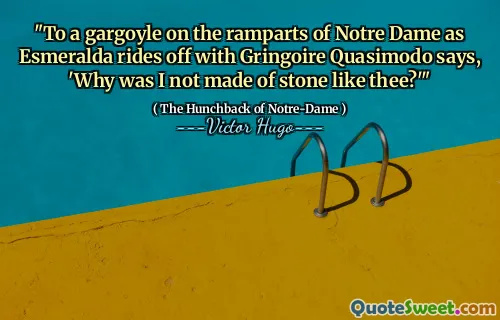In proportion as architecture degenerated, printing throve and flourished. The capital of forces which human thought had expended in building, it henceforth expended in books.
In Victor Hugo's "The Hunchback of Notre-Dame," the decline of architecture coincides with the rise of printing and literature. As the quality of architectural endeavors waned, society shifted its focus and energy towards the production of written works. This transition highlights a change in cultural priorities, where the creative output of human thought found new expression through books rather than buildings.
Hugo suggests that when the grand structures of architecture began to suffer, the intellectual efforts that were once dedicated to them were redirected into literature. The flourishing of printing reflects a transformation in the way society engages with ideas, emphasizing the importance of books as vessels for human creativity and thought in an era of architectural decline.







